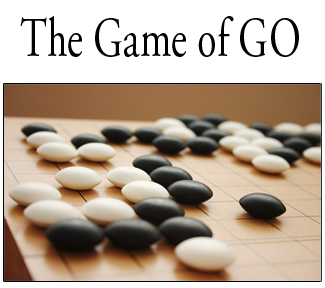-

". . . [it is] something unearthly . . . If there are sentient beings on other planets, then they play Go."
-
Emanuel Lasker, chess grandmaster
-
"Go uses the most elemental materials and concepts -- line and circle, wood and stone, black and white -- combining them with simple rules to generate subtle strategies and complex tactics that stagger the imagination."
-
Iwamoto Kaoru, 9-dan professional Go player and former Honinbo title holder
-
"There are on the Go board 360 intersections plus one. The number one is supreme and gives rise to the other numbers because it occupies the ultimate position and governs the four quarters. 360 represents the number of days in the [lunar] year. The division of the Go board into four quarters symbolizes the four seasons. The 72 points on the circumference represent the [five-day] weeks of the [Chinese lunar] calendar. The balance of Yin and Yang is the model for the equal division of the 360 stones into black and white."
-
From The Classic of Go, by Chang Nui (Published between 1049 and 1054)
-
"Monks who have a talent for it play go with women and become their lovers."
-
Yamaoka Genrin, Edo-period essayist
-
"The board has to be square, for it signifies the Earth, and its right angles signify uprightness. The pieces of the two sides are yellow and black; this difference signifies the Yin and the Yang -- scattered in groups all over the board, they represent the heavenly bodies. These significances being manifest, it is up to the players to make the moves, and this is connected with kingship. Following what the rules permit, both opponents are subject to them -- this is the rigor of the Tao."
-
Pan Ku, 1st century historian
|





